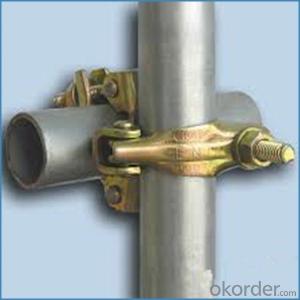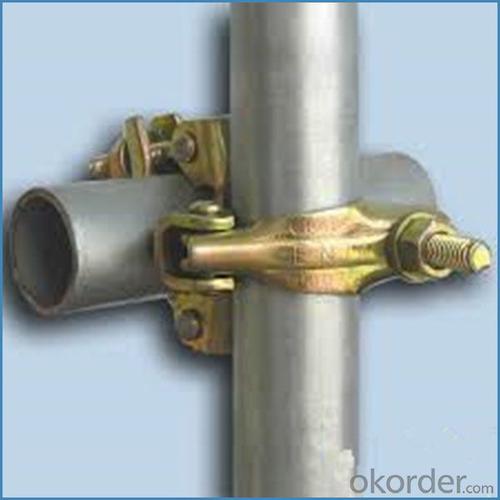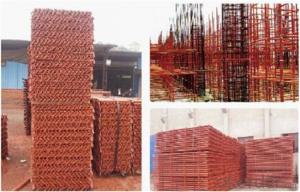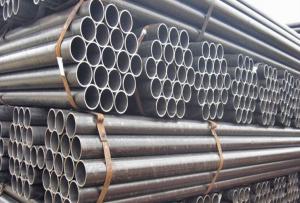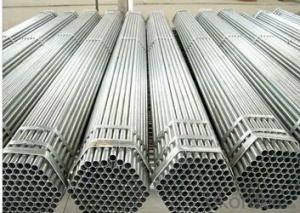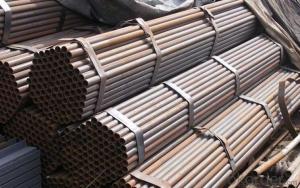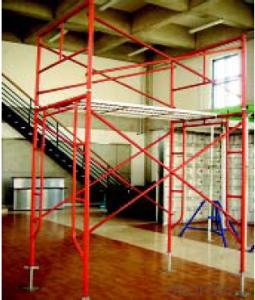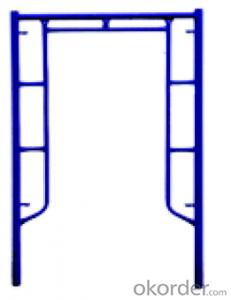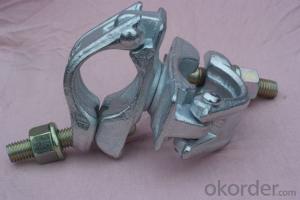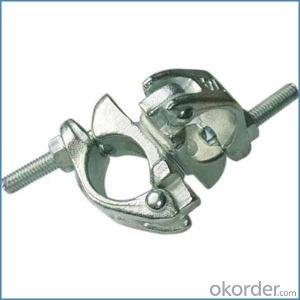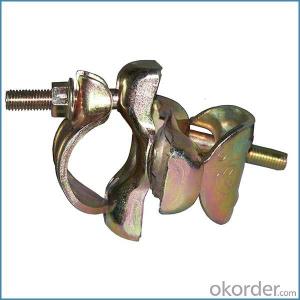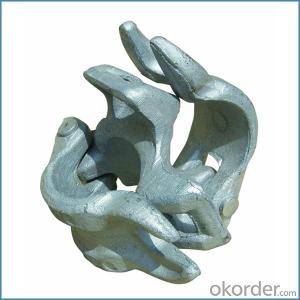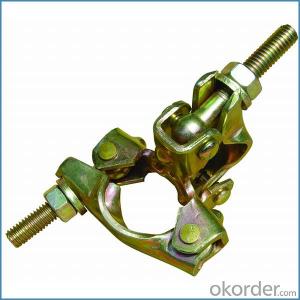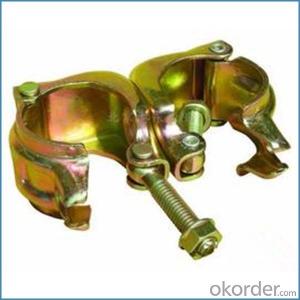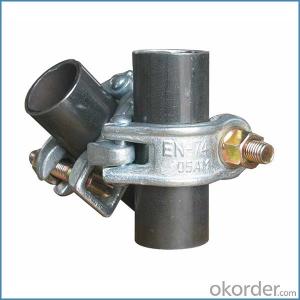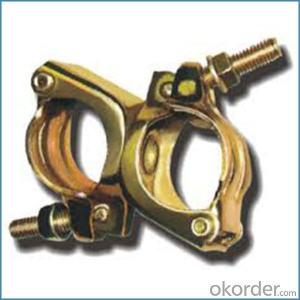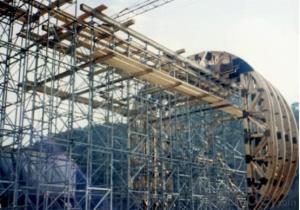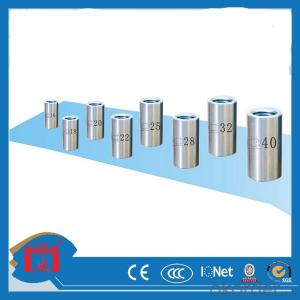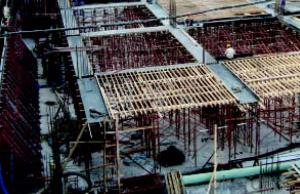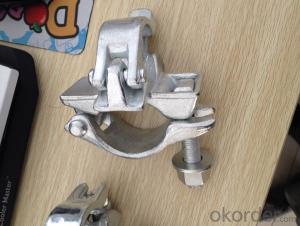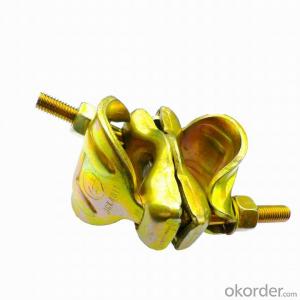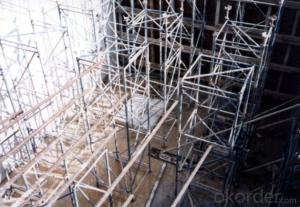Scaffolding Pressed Double Coupler British Type for Sale
- Loading Port:
- Tianjin
- Payment Terms:
- TT OR LC
- Min Order Qty:
- 1000 kg
- Supply Capability:
- 100000 kg/month
OKorder Service Pledge
OKorder Financial Service
You Might Also Like
Scaffolding Pressed Double Coupler British Type for Sale
Description
1.The scaffolding coupler is always used to connect the steel pipe as scaffolding system.
2.The often used coupler is swivel coupler and righ angle coupler .
3.We can provide types of scaffolding coupler according to your requirement.
4.Couoler can fix the 48.3mm scaffolding steel pipe tightly and make the whole scaffolding system more steadily.
5.Material:Q235 steel
6.Overall Size:48.3mm*48.3mm
7.Surface Finish: Galvanized/ Painted
8.Standard:BS1139,EN74
9.Package:25pcs/bag
10.Manufactuering as per customer requirements
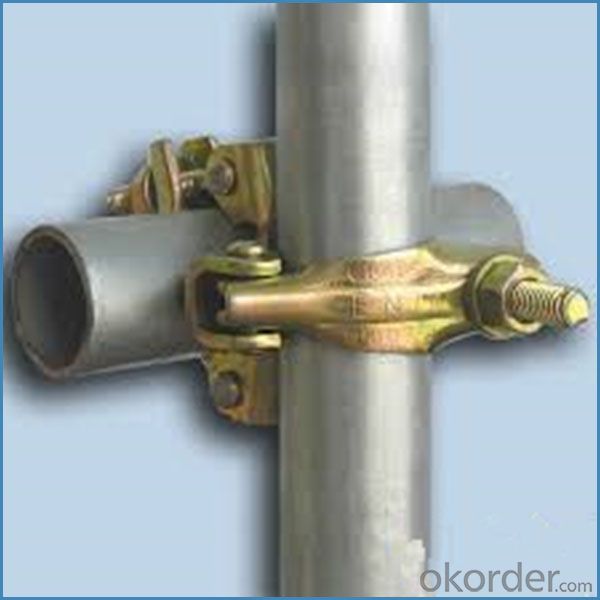
Feature
(1)Excellent Anti-Breaking—Cold Pressed Steel
(2)Outstanding Resistance Deformation
(3)Strong Anti-Dropping Ability
(4)Longtime USe
(5)Qualtity Guaranteed
(6)OEM Service
Photo
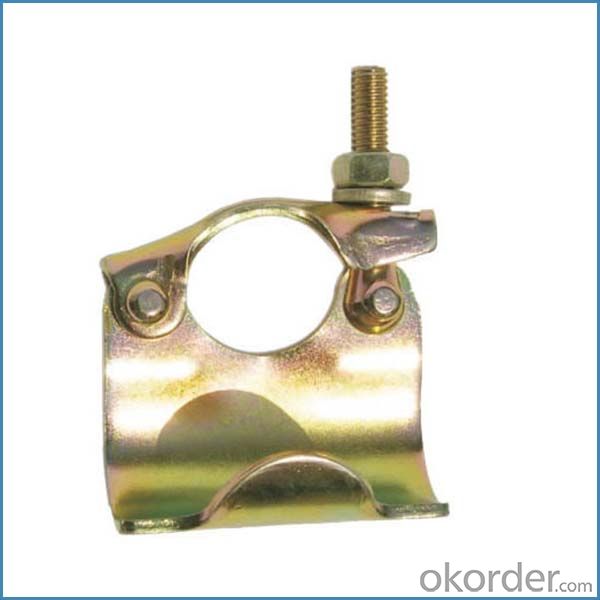
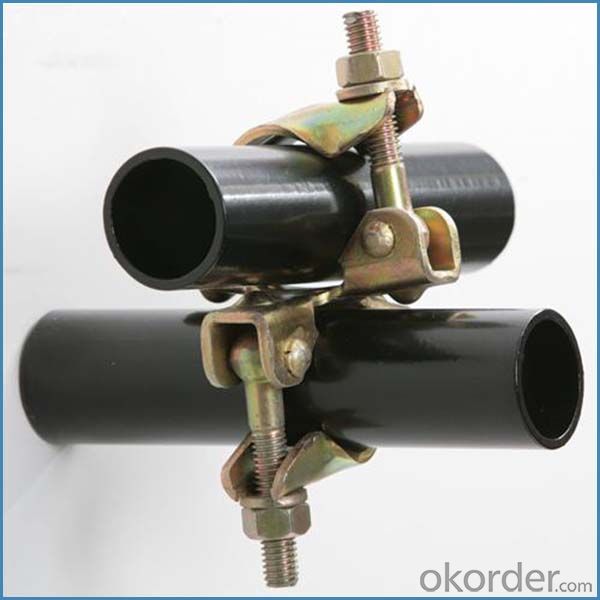
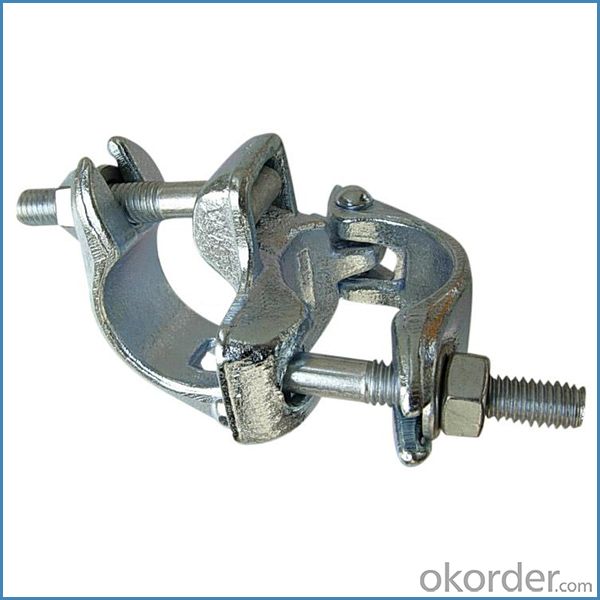
Parameter
| Material | Q235,345steel |
| Size | 48.3mm*48.3mm |
| Surface finish | Galvanized |
| Weight | 1.1kg around |
| Standard | BS1139,EN74 |
| Package | 25pcs/bag,steel pallet |
| Manufacture | As per customer requirement |
| Market | Africa, South America, the Middle East and Asia |
FAQ
Q: Are you a factory or trading company?
We are a state-owned corporation in China,dealing with various kinds of building materials.We have our holding subsidiaries.
Q: Where is your factory located? How can I visit there?
Our factory is located all around China.
Q: Can I get some samples?
Sample is free, customer only pay freight for the first time.
Q: Delivery?
10-30days. (5-15 containers)
Any question,feel free to contact us.
- Q: How do steel tube couplers ensure stability and rigidity in scaffolding structures?
- To ensure stability and rigidity in scaffolding structures, steel tube couplers play a crucial role. These couplers securely connect steel tubes, creating a strong and stable framework for the scaffolding system. The stability provided by steel tube couplers is due to their ability to establish a reliable and secure connection between the tubes. Made from high-quality steel, known for its strength and durability, these couplers create a solid connection that prevents any movement or displacement that could compromise the scaffolding structure's stability. In addition to their inherent strength, steel tube couplers are designed with various features that enhance stability. For example, most couplers have a bolt or pin mechanism that ensures a tight and secure fit. This mechanism prevents accidental disconnections and ensures the firm connection between the tubes. Furthermore, the design of these couplers often includes gripping surfaces or teeth that provide extra grip and prevent slippage between the tubes. Moreover, the use of steel tube couplers allows for flexibility and adjustability in scaffolding structures. These couplers can be easily installed and removed, allowing for modifications or extensions to the scaffolding system as needed. This ability to make adjustments ensures that the structure remains stable and rigid, even when there are changes in the construction or work requirements. Overall, steel tube couplers are indispensable components in scaffolding structures. Their strong and secure connections, combined with their flexibility and adjustability, provide a reliable framework capable of withstanding the weight and pressure exerted on the scaffolding system.
- Q: Are steel tube couplers compatible with scaffolding stairs and ladders?
- Yes, steel tube couplers are compatible with scaffolding stairs and ladders. Steel tube couplers are commonly used in the construction industry to connect scaffolding tubes and create stable and secure scaffolding structures. These couplers are designed to securely join tubes together at various angles, allowing for the construction of scaffolding stairs and ladders. By using steel tube couplers, scaffolding stairs and ladders can be easily integrated into scaffolding systems, providing safe and convenient access to different levels of a construction site.
- Q: Can steel tube couplers be used with both steel and aluminum scaffolding tubes?
- Indeed, both steel and aluminum scaffolding tubes can be utilized in conjunction with steel tube couplers. These couplers have been meticulously crafted to interlink and firmly fasten scaffolding tubes constructed from diverse materials, such as steel and aluminum. Typically forged from top-notch steel, these couplers are engineered to establish a robust and reliable connection between the tubes. To guarantee a proper fit and promote a secure working environment, it is imperative to verify that the couplers are compatible with the precise size and dimensions of the scaffolding tubes employed.
- Q: What inspaction to be dan in scaffold i?
- inspaction to be dan in scaffold i dunt no what he is tlking about dunnit?
- Q: How do steel tube couplers contribute to the overall adaptability of a scaffolding structure?
- Steel tube couplers are essential components in scaffolding structures as they provide a strong and flexible connection between tubes. By allowing tubes to be connected at various angles and lengths, steel tube couplers greatly enhance the adaptability of a scaffolding structure. This adaptability enables scaffolding to be easily adjusted and modified to fit different configurations and requirements, ensuring a safe and efficient working platform for construction and maintenance tasks.
- Q: Can steel tube couplers be used for scaffolding projects with multiple levels and platforms?
- Yes, steel tube couplers can be used for scaffolding projects with multiple levels and platforms. Steel tube couplers are designed to connect scaffolding tubes securely, allowing for the construction of a stable and reliable scaffold structure. These couplers can be used to create strong connections between vertical and horizontal tubes, creating a safe and stable framework for multiple levels and platforms. The use of steel tube couplers ensures that the scaffold structure can support the weight of workers, equipment, and materials at various heights, providing a secure working platform for construction projects with multiple levels.
- Q: Are steel tube couplers adjustable for different heights in suspended scaffolding?
- No, steel tube couplers are not adjustable for different heights in suspended scaffolding. They are used to securely connect steel tubes together, but the height of the scaffold would need to be adjusted by changing the length of the tubes themselves.
- Q: Can steel tube couplers be used for scaffolding in marine or offshore environments?
- Yes, steel tube couplers can be used for scaffolding in marine or offshore environments. However, it is important to ensure that the couplers are made from corrosion-resistant materials such as stainless steel or galvanized steel to withstand the harsh conditions and prevent rusting. Regular maintenance and inspections are also necessary to ensure their continued safety and functionality in these environments.
- Q: Can steel tube couplers be used for scaffolding projects in seismic areas with high ground motion?
- Yes, steel tube couplers can be used for scaffolding projects in seismic areas with high ground motion. Steel tube couplers are commonly used in scaffolding systems due to their strength and stability. They provide a secure connection between tubes, ensuring the overall stability and safety of the scaffold structure. In seismic areas with high ground motion, it is crucial to use reliable and durable components to withstand the forces generated by earthquakes. Steel tube couplers are designed to handle such dynamic loads and are suitable for scaffolding projects in seismic areas with high ground motion.
- Q: Are steel tube couplers compatible with other scaffolding accessories?
- Yes, steel tube couplers are compatible with other scaffolding accessories. Steel tube couplers, also known as scaffolding clamps, are designed to connect steel tubes or pipes together to form a stable and secure scaffolding structure. These couplers are versatile and can be used with various scaffolding accessories such as scaffold boards, scaffolding frames, diagonal braces, and base plates. They provide a strong connection between different components of the scaffolding system, ensuring safety and stability. Steel tube couplers come in different types such as swivel couplers, sleeve couplers, putlog couplers, and beam couplers, each designed for specific purposes. Overall, steel tube couplers are an essential component of scaffolding systems and can be easily integrated with other compatible accessories to create a safe and reliable scaffolding structure.
Send your message to us
Scaffolding Pressed Double Coupler British Type for Sale
- Loading Port:
- Tianjin
- Payment Terms:
- TT OR LC
- Min Order Qty:
- 1000 kg
- Supply Capability:
- 100000 kg/month
OKorder Service Pledge
OKorder Financial Service
Similar products
Hot products
Hot Searches
